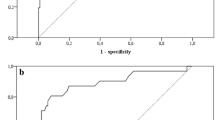Abstract.
The aim of this paper is to provide the prevalence rates of mild, moderate and severe symptoms of social anxiety in a sample of high school students and to analyze gender differences and associated impairment levels within these three levels of severity. Five hundred and twenty students were assessed with the Social Anxiety Spectrum Self-Report (SHY-SR), a questionnaire that explores social anxiety spectrum. By applying two cut-off scores determined on a separate sample by using ROC analysis, the large majority (73.3 %) of subjects were classified as low scorers, 9% as medium scorers and 17.7% as high scorers. Fears related to social situations were reported both by high and medium scorers. Functional impairment defined by avoidance and school difficulties was more common among high scorers, but it was also reported to a significant extent by medium scorers. Compared to low and medium scorers, high scorers showed a higher F/M ratio (about 4:1) and a more homogeneous symptomatological profile in the two genders. In conclusion, our report confirms, in line with the literature, that even moderate levels of social anxiety are associated with significant functional impairment and distress for the individuals.
Similar content being viewed by others
Author information
Authors and Affiliations
Corresponding author
Rights and permissions
About this article
Cite this article
Dell’Osso, L., Rucci, P., Ducci, F. et al. Social anxiety spectrum. European Archives of Psychiatry and Clinical Neurosciences 253, 286–291 (2003). https://doi.org/10.1007/s00406-003-0442-5
Received:
Accepted:
Issue Date:
DOI: https://doi.org/10.1007/s00406-003-0442-5




